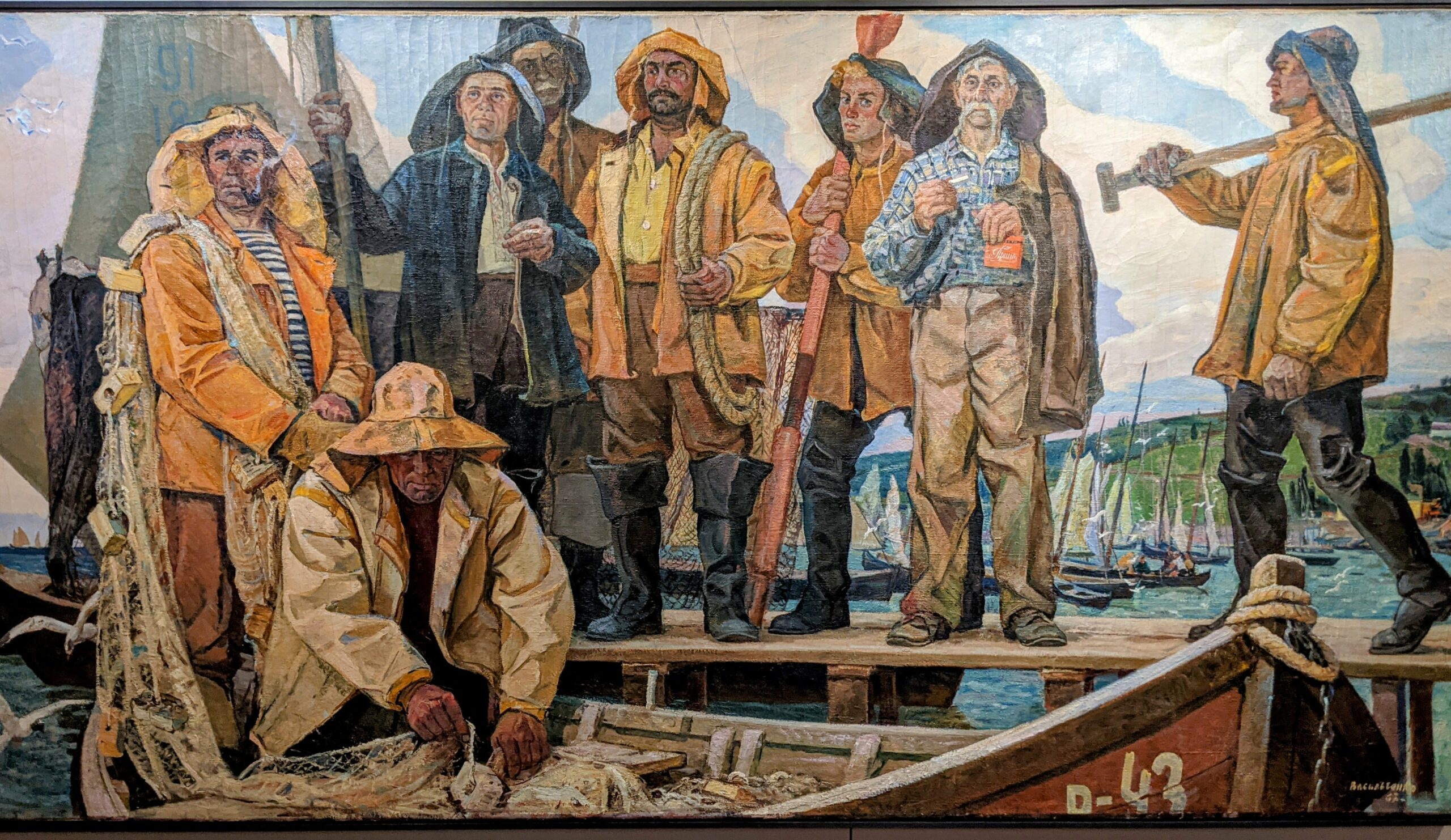Image: Oil on canvas, Fishermen of ‘Russia’ Collective Farm (1957) by Ilia Vasylchenko. The Museum of Russian Art, Minneapolis, MN.
Russian Immigrants in the Twin Cities
Minnesota’s Russian-speaking community draws its roots back to the 1880s, when the first trickle of Russian immigrants began. It was only after the Second World War that Russian-speaking immigrants began to come in distinct waves. In the 1970s and 1980s, most were Russian Jews fleeing ethnic and religious persecution. Another large wave came in 1991 after the dissolution of the Soviet Union, followed by another wave in the 2000s of immigrants joining their family members who had already established roots. The most recent group of immigrants comprises Russians fleeing after the invasion of Ukraine, often for political reasons or to escape mobilization. However, these immigrants face difficulties settling in the United States since there is no official sponsor program.
The Russian-speaking community was at its most tight-knit after the dissolution of the Soviet Union, when the wave of new immigrants, many of whom did not speak English, was geographically concentrated. However, since then, the community has become gradually dispersed and is less close than other immigrant groups like the Hmong or Somalis. Today, the Minnesota State Demographic Center estimates there are 43,000 people in Minnesota with Russian ancestry.
